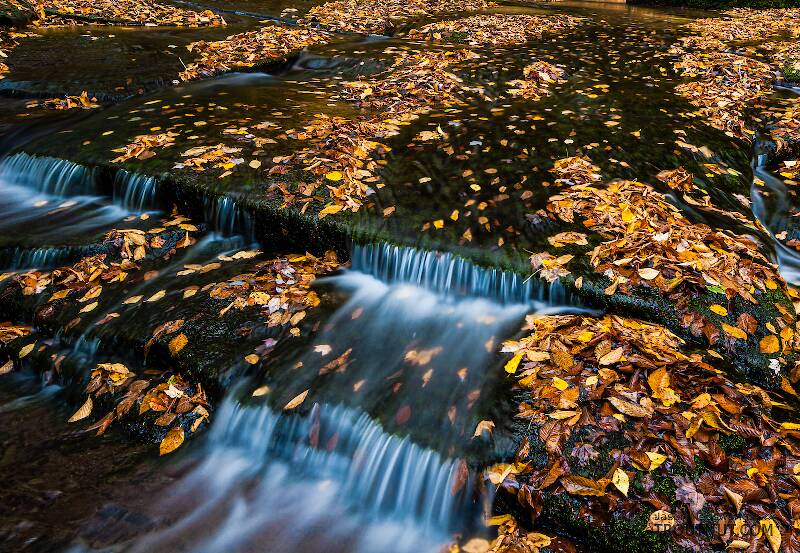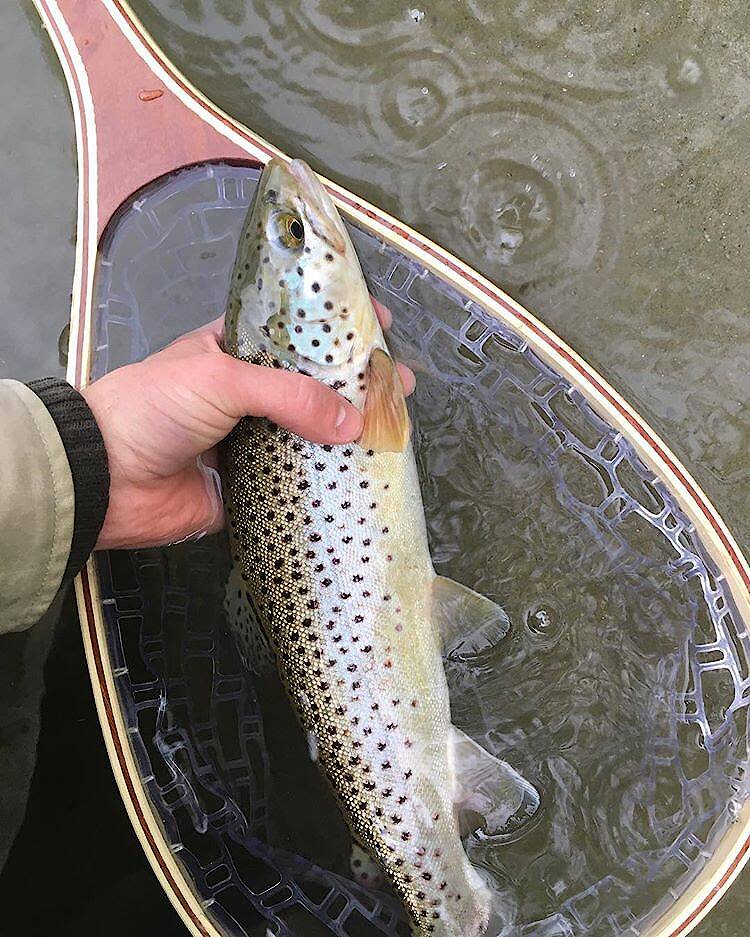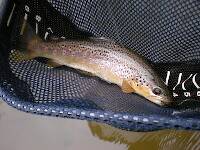
Blue-winged Olives
Baetis
Tiny Baetis mayflies are perhaps the most commonly encountered and imitated by anglers on all American trout streams due to their great abundance, widespread distribution, and trout-friendly emergence habits.
Featured on the forum

I was not fishing, but happened to be at an unrelated social event on a hill above this tiny creek (which I never even saw) when this stonefly flew by me. I assume it came from there. Some key characteristics are tricky to follow, but process of elimination ultimately led me to Sweltsa borealis. It is reassuringly similar to this specimen posted by Bob Newell years ago. It is also so strikingly similar to this nymph from the same river system that I'm comfortable identifying that nymph from this adult. I was especially pleased with the closeup photo of four mites parasitizing this one.

Troutnut is a project started in 2003 by salmonid ecologist Jason "Troutnut" Neuswanger to help anglers and
fly tyers unabashedly embrace the entomological side of the sport. Learn more about Troutnut or
support the project for an enhanced experience here.
Vtbrowns57 on Mar 28, 2019March 28th, 2019, 5:51 am EDT
Does anyone have any suggestions for early season stonefly patterns for the Northeast that aren't to difficult to tie? I'm working with black goose biots, black/brown angora goat dubbing, and turkey feathers..
Thanks!!
-Alex
Thanks!!
-Alex
Martinlf on Mar 29, 2019March 29th, 2019, 11:43 pm EDT
A very good Delaware River guide gave me a dry fly pattern years ago that he swears by. It's very simple: black or brown body of any dry fly dubbing, a downwing, caddis style, of clear/white zelon or antron, and hackle at the thorax to match the body color. Tie off the hackle and you're done. For nymphs any basic simple pattern will work. I just made mine up, with no fancy wingcase. I did use small rubber legs on some of them. For some ideas, use Google.
"He spread them a yard and a half. 'And every one that got away is this big.'"
--Fred Chappell
--Fred Chappell
Vtbrowns57 on Apr 1, 2019April 1st, 2019, 8:27 am EDT
Hi Martinlf,
Thanks for sharing that pattern, i'll have to experiment and spend some time at the vise. I also like the small rubber legs for the nymphs as well.
Alex
Thanks for sharing that pattern, i'll have to experiment and spend some time at the vise. I also like the small rubber legs for the nymphs as well.
Alex
Jmd123 on Apr 2, 2019April 2nd, 2019, 5:50 am EDT
Try an #12-14 Elk Hair Caddis tied in Early Brown Stone colors - a golden-brown body and a grayish brown wing & hackle. I had browns hitting this pattern in mid-April in the Rifle River here in MI some years ago (not this one!). Couldn't hook them though! Fortunately a nice 14-incher slammed a POG Bugger on my way down to the car - so hard in fact I thought it was a steelhead - and saved me from being skunked for the day...Good luck!
Jonathon
Jonathon
No matter how big the one you just caught is, there's always a bigger one out there somewhere...
Crepuscular on Apr 3, 2019April 3rd, 2019, 2:40 am EDT
Does anyone have any suggestions for early season stonefly patterns for the Northeast that aren't to difficult to tie? I'm working with black goose biots, black/brown angora goat dubbing, and turkey feathers..
Thanks!!
-Alex
Hi Alex. Welcome to Troutnut. Louis is right on with that simple Early Stonefly. Here is another:
Hook: any 1xl dry fly hook (I tie all my early season stoneflies on Hends 323BL #16 and #18) but use whatever size your bugs are.
Thread: Black or Reddish Brown 12/0 veevus
Tail: very short clump of dark dun or black cdc (about 1/2 the hook gap in length)
Abdomen: Dark Dun hackle palmered over black or mahogany dubbing.
Underwing: 6 strands of pearl crystal flash
Overwing: Light Dun Snowshoe hare tied to extend to just past the abdomen
Thorax:Dark dun hackle over black or mahogany dubbing
This is just a derivation of a stimulator, tied with materials that I find float better and is a little easier to tie. You can substitute CDC for the wing instead of the snowshoe.
Eric
Quick Reply
Related Discussions
Topic
Replies
Last Reply
6
May 12, 2013
by Tigermidge
by Tigermidge






